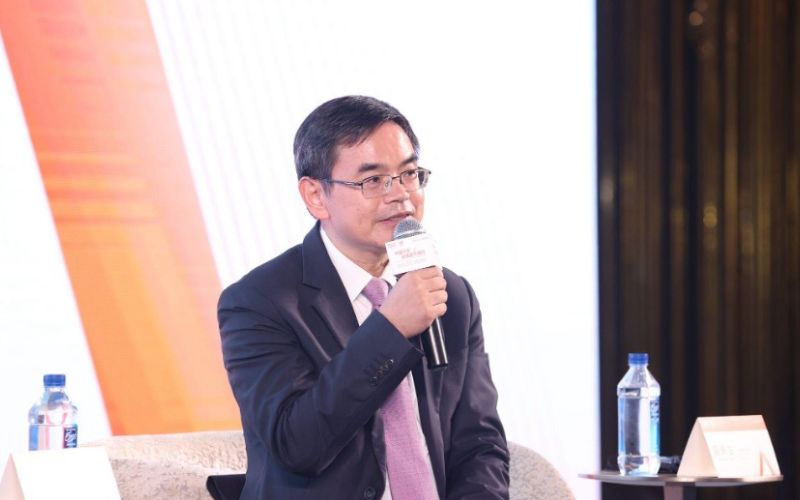Insights, Events and Videos
While it has been reported that some asset managers have been dropping the word “sustainable” from the names of their funds due to regulatory and reputational worries,[1] scientific data collated by Nasa shows climate change is not going away,[2] and that the atmospheric carbon dioxide level is twice that of the average over the past 800,000 years.[3] The Earth has already warmed 1.1C since the industrial revolution, according to the UN’s Intergovernmental Panel on Climate Change.
Consequently, companies' awareness of climate issues seems to be increasing, and more than 80 per cent of the world’s largest companies “are reporting exposure to physical or market transition risks associated with climate change, and a similar share are engaging in reducing corporate emissions”,[4] according to Richard Mattison, chief executive of Trucost, part of S&P Global Market Intelligence.
China is a major emitter of carbon emissions,[5] but in June of this year the country reported that its non-fossil fuel energy sources had exceeded 50 per cent of its total installed electricity generation capacity for the first time.[6]
According to Global Energy Monitor, China’s solar capacity in the first quarter of 2023 had reached 228 gigawatts – more than the rest of the world combined – while wind capacity, a field in which China leads the world, was at 310GW in June.[7] With another 750GW of new wind and solar projects in the pipeline, it is forecast that China will meet its 2030 target of 1,200GW five years early.[8]
Chinese companies are being encouraged by the government to integrate environmental, social and corporate governance (ESG) practices into their corporate strategies, with financial services firms required to include sustainability indicators in their executives’ appraisals.[9]The moves are all part of China’s "dual carbon" goals, which aim for peak CO2 emissions by 2030 and to achieve carbon neutrality before 2060.
“Expectations for corporate ESG practices vary across the globe,” said Richard Sheng, Secretary of the Board of Directors at Ping An Insurance (Group) of China.[10] “It is worth considering how Chinese companies make choices and take action in light of these differences, which deserve deep reflection from corporate leaders.”
Ping An has, in fact, identified two emerging areas of risk that will have the greatest impact on its future business. They are China’s demographic transformation, resulting in new health issues across society, and climate change.[11] The company has turned these into sources of competitive advantage through the development of a healthcare and elderly-care ecosystem used by some 147mn of its 230mn customers,[12] and innovation in green financing for new carbon-capture projects, launching ocean and forestry carbon-sink insurance and mangrove biodiversity protection initiatives.
In the company’s latest sustainability report, Ping An founder and chair Peter Ma said the new healthcare ecosystem provides for the medical needs for Chinese society now and in the future.
“Ping An has created three core service models, namely ‘Insurance + Health Management’, ‘Insurance +Home-Based Elderly Care’, and ‘Insurance + High-End Resort Community-Based Elderly Care’ to enable old people to enjoy one-stop medical, health and elderly-care services.”[1]
Ping An is also committed to supporting the expansion of green finance. In June of this year, group subsidiary Ping An Bank agreed to provide financing for a new carbon-capture project by Baotou Iron and Steel Group that will have a total capacity of 2mn tonnes. The project aims to achieve a reduction in CO2 emissions of 365,300 tonnes per year, equivalent to planting nearly 19mn trees. Construction of the first phase, with capacity of 500,000 tonnes, began in June 2022.[14]
In February, Ping An launched its first ocean carbon-sink index insurance policy for marine ecosystem protection in the Chinese city of Dalian. It followed a pilot of the forest carbon sink remote-sensing index insurance policy introduced by Ping An Property & Casualty (P&C) Insurance (Ping An P&C) in 2021.
The ocean policy provides carbon-sink risk protection with Rmb400,000 ($56,200) for more than 8,800 sq m of kelp, shellfish and algae, building upon Ping An P&C’s carbon sink insurance coverage on terrestrial and marine ecosystems, including forests, mangroves and grasslands.[15]
The compensation will be used in the rescue of marine species after a disaster, and overall restoration of the marine ecological system.
And late last year, Ping An established China’s first charitable trust for mangrove ecosystem conservation, in the southern city of Shenzhen. The Ping An Biodiversity and Environmental Conservation Charitable Trust aims to protect biodiversity and promote ecological conservation and sustainable development. The establishment of the Trust follows Ping An’s launch of mangrove carbon-sink insurance.[16]
“We will continue to develop more agricultural insurance products for ecological and environmental protection, as well as explore different pathways to achieve low-carbon transformation for insurance services,” Jiang Hua, Director of Ping An P&C, said. “We will fully support the development of carbon-sink forests and carbon-sink fisheries, providing comprehensive risk protection for carbon-sink resources to help China achieve its ‘dual carbon’ goals.”[17]
Ultimately, in pursuit of balanced, high-quality and long-term development, Ping An has committed to improving its practice in all areas of ESG, setting five-year goals for core sustainability-related issues, actions and management.[18]
“Ping An has established sustainable development as the company’s development strategy,” said Sheng, “defining it as the foundation to ensure the pursuit of the maximisation of long-term value and focusing on enhanced implementation in the areas of environment, society and corporate governance.”
9.Internal documents reference, under CBRIC "Corporate Governance Standards for Banking and Insurance Institutions" in 2021.



